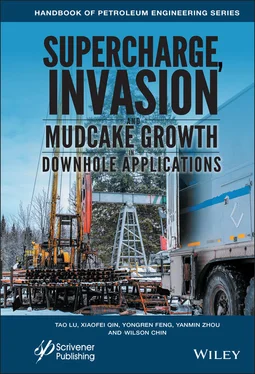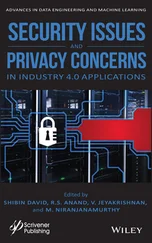Figure 2.39c. FT-00 (DOI) exact forward liquid simulator.Figure 2.40. FT-01, exact inverse liquid simulator.Figure 2.41. FT-02, exact, steady forward and inverse gas simulators.Figure 2.42a. FT-06, numerical liquid and gas forward simulator.Figure 2.42b. FT-06, general flow rate functions, forward simulator.Figure 2.42c. FT-07, a FT-06 extension supporting general time-varying flowline ...Figure 2.43. FT-PTA-DDBU, early time, low mobility, flowline volume non-negligib...Figure 2.44. Classic inverse model.Figure 2.45. Both software modules apply to drawdown-buildup applications using ...Figure 2.46. Input screen for “Model SC-DD-INVERSE-2.”Figure 2.47. Input screen for “Model SC-DD-FORWARD-3B.”Figure 2.48a. Input screen for “Model SC-DD-FORWARD-2-CREATE-TABLES-3B.”Figure 2.48b. Pressure trends for selected overbalance pressures.Figure 2.49a. Input screen for “Model SC-DDBU-INVERSE-2.”Figure 2.49b. Input screen for “Model SC-DDBU-FORWARD-4NOPOR.”Figure 2.50. Input screen for integrated forward simulator for both “drawdown on...Figure 2.51. Main interface, “multiple drawdown and buildup” inverse models (MDD...Figure 2.52. Exact steady-state inverse solver (see “center button,” main menu).Figure 2.53. Inverse method, Model 2 (same as FT-PTA-DDBU).Figure 2.54. Eleven transient inverse situations supported.Figure 2.55. Original Schlumberger double-drawdown application.Figure 2.56. Main system level simulation menus and options.Figure 2.57. Run-time simulation menus for specific run.Figure 2.58. Initial cylindrical invasion and mudcake buildup.Figure 2.59. Pumpout (red) and simultaneous invasion (blue).Figure 2.60. Early results (left) and later dynamics (right) times.Figure 2.61. Integrated software platform, a beginning.Figure 2.62. Underbalanced drilling with reservoir outflow.Figure 2.63. Overbalanced drilling with wellbore inflow.Figure 2.64. Overbalanced and underbalanced drilling applications with sealed bo...Figure 2.65a. Pressure transient response with overbalance.Figure 2.65b. Pressure transient response with overbalance.Figure 2.65c. Pressure transient response with overbalance.Figure 2.65d. Pressure trends for selected overbalance pressures.Figure 2.65e. Pressure trends for selected overbalance pressures.Figure 2.65f. Pressure transient response with overbalance.Figure 2.65g. Pressure transient response with overbalance.Figure 2.66a. Pressure transient response with overbalance.Figure 2.66b. Pressure transient response with overbalance. Inverse calculation ...Figure 2.66c. Pressure transient response with overbalance.Figure 2.66d. Pressure transient response with overbalance.Figure 2.66e. Pressure transient response with overbalance.Figure 2.67. Eleven general drawdown-buildup inverse models.Figure 2.68a. Model 1 rate function (black dots denote data points).Figure 2.68b. Model 2 rate function (black dots denote data points).Figure 2.68c. Model 3 rate function.Figure 2.68d. Model 4 rate function.Figure 2.68e. Model 5 rate function.Figure 2.68f. Model 6 rate function.Figure 2.68g. Model 7 rate function.Figure 2.68h. Model 8 rate function.Figure 2.68i. Model 9 rate function.Figure 2.68j. Model 10 rate function.Figure 2.69a. Model 11 rate function (three “black circles” show pressure data s...Figure 2.69b. FT-00 exact inputs.Figure 2.69c. Source probe pressure and pumpout schedule (all rates > 0). Flow r...Figure 2.69d. Inverse model screen.Figure 2.69e. FT-00 exact inputs.Figure 2.69f. Source probe pressure and pumpout schedule (mixed signs).Figure 2.69g. Inverse model screen.Figure 2.69h. FT-00 exact inputs.Figure 2.69i. Source probe pressure and pumpout schedule (mixed signs).Figure 2.69j. Inverse model screen.Figure 2.69k. FT-00 exact inputs.Figure 2.69l. Source probe pressure and pumpout schedule (mixed signs).Figure 2.69m. Inverse model screen.Figure 2.70a. Catscan, linear test vessel with core sample (flow, top to bottom)...Figure 2.70b. Radial flow Catscan test vessel.Figure 2.70c. Catscan, invasion in radial core sample (inner invaded white zone ...Figure 2.70d. Linear flow Catscans, thin dark mudcake at center of core and inva...Figure 2.70e. Linear flow Catscans, standard optical contrast.Figure 2.70f. Linear flow Catscans, high contrast visualization.Figure 2.71. Single-probe supercharging and pumping model.Figure 2.72. Pressure and contamination profiles in r-z plane.Figure 2.73a. Pressure-concentration profiles, 0.33 sec.Figure 2.73b. Pressure-concentration profiles, 1.00 min.Figure 2.73c. Pressure-concentration profiles, 3.33 min.Figure 2.73d. Pressure-concentration profiles, 3.67 min.Figure 2.73e. Pressure-concentration profiles, 5.67 min.Figure 2.73f. Formation fluid concentration at source probe.Figure 2.73g. Source probe pressure transient history.Figure 2.73h. Observation probe pressure transient history.Figure 2.74a. Initial pumping, highly invaded upper zone.Figure 2.74b. Supercharging seen in left pressure plot.Figure 2.74c. Continued supercharging and invasion.Figure 2.75a. Initial cylindrical invasion before pumping.Figure 2.75b. Dual probe pumping initiated.Figure 2.75c. Supercharging evident at large times.Figure 2.76a. Initial pumping of cylindrical invaded region.Figure 2.76b. Continued straddle packer pumping.Figure 2.76c. Strong lateral pumping.Figure 2.76d. Lower formation strongly affected.Figure 2.77. Source and observation probe pressures.Figure 2.78. Source probe formation fluid concentration.Figure 2.79a. Field log, multirate flow and pressure.Figure 2.79b. Source and observation probe simulation.
3 Chapter 3Figure 3.1. Total pumpout of 5 cc, for all three piston scenarios.Figure 3.2a. Constant rate pumping (idealization).Figure 3.2b. FT-00 forward simulator input menu.Figure 3.2c. Pumpout schedule.Figure 3.2d. Source probe pressure.Figure 3.2e. Observation probe pressure.Figure 3.2f. Model 1, for drawdown “pressure-time” data.Figure 3.2g. Inverse pressure buildup problem (Model 2).Figure 3.2h. Inverse worksheet.Figure 3.3a. Slow ramp up/down rate pumping.Figure 3.3b. FT-00 forward simulator input menu.Figure 3.3c. Pumpout schedule.Figure 3.3d. Source probe pressure.Figure 3.3e. Observation probe pressure.Figure 3.3f. Model 6 inverse problem.Figure 3.4a. Impulsive start/stop rate pumping.Figure 3.4b. FT-00 forward simulator assumptions.Figure 3.4c. Pumpout schedule.Figure 3.4d. Source prove pressure.Figure 3.4e. Observation probe pressure.Figure 3.4f. Model 6, inverse solver.Figure 3.5a. “Fast Forward” forward supercharge simulator.Figure 3.5b. Drawdown-buildup with strong supercharge.Figure 3.5c. Drawdown – only curve with supercharge.Figure 3.5d. Drawdown-only inverse supercharge model.Figure 3.5e. Drawdown-buildup inverse supercharge model.Figure 3.6a. Creating FT-00 pressure transient data for an anisotropic simulatio...Figure 3.6b. Source and observation probe pressures versus time at different mag...Figure 3.6c. FT-01 input screen.Figure 3.6d. Drawdown inverse method.Figure 3.6e. Exact direct gas solver for dual probe steady flows.Figure 3.7. Conventional dual and triple probe testers.Figure 3.8. Multiple “receiver” formation tester (having multiple spaced observa...Figure 3.9. Transmitter-receiver, receiver-receiver operations modes (see Chapte...Figure 3.10. Main FT-00 menu, see bottom right “Run” button.Figure 3.11. Depth of investigation, DOI” analysis setup.Figure 3.12a. Flow rate schedule.Figure 3.12b. Source probe response.Figure 3.12c. Pressure response at 10 cm (3.9 in).Figure 3.12d. Pressure response at 20 cm (7.9 in).Figure 3.12e. Pressure response at 20 cm (7.9 in), continued.Figure 3.12f. Pressure response at 50 cm.Figure 3.12g. Pressure response at 90 cm (35 in).Figure 3.13. FT-00 host simulator.Figure 3.14. Batch mode information message.Figure 3.15. Loop parameter setup.Figure 3.16. FT-00 running in automated batch mode (note, ? and ??).Figure 3.17. Option to view pressure plots.Figure 3.18a. Simulation No. 1, input parameters.Figure 3.18b. Simulation No. 1, Source probe response.Figure 3.18c. Simulation No. 1, Observation probe response.Figure 3.19a. Simulation No. 2, with kh = 1 md again, kv increased.Figure 3.19b. Simulation No. 2, Source probe response.Figure 3.19c. Simulation No. 2, Observation probe response.Figure 3.20a. Simulation No. 25, last kh = 500 md, kv = 100 md.Figure 3.20b. Simulation No. 25, Source probe response.Figure 3.20c. Simulation No. 25, Observation probe response.Figure 3.21. Mudcake thickness and hole radius considerations.Figure 3.22. Exact lineal invasion solution (Chin et al., 1986).Figure 3.23a. Radial flow Catscan test vessel.Figure 3.23b. Catscan invasion in radial core sample (inner invaded white zone d...
Читать дальше










